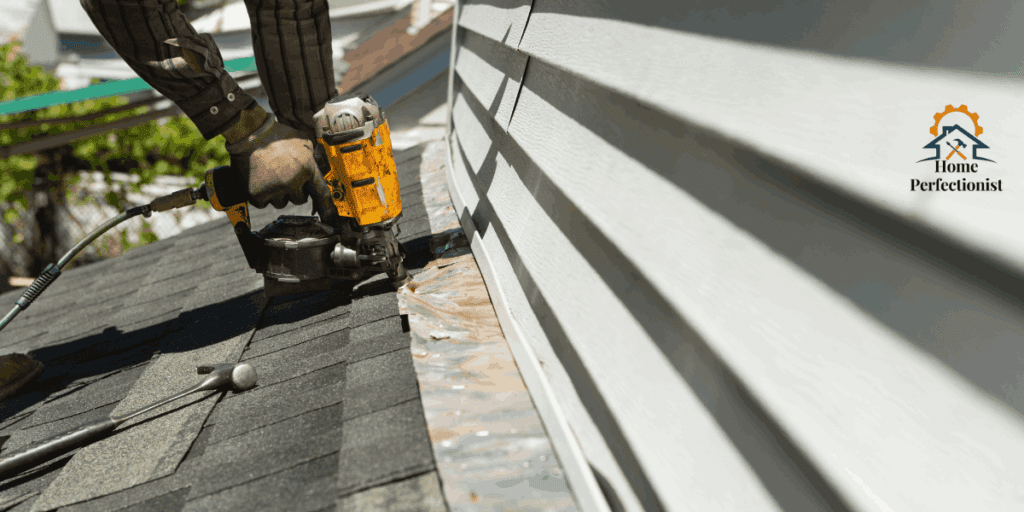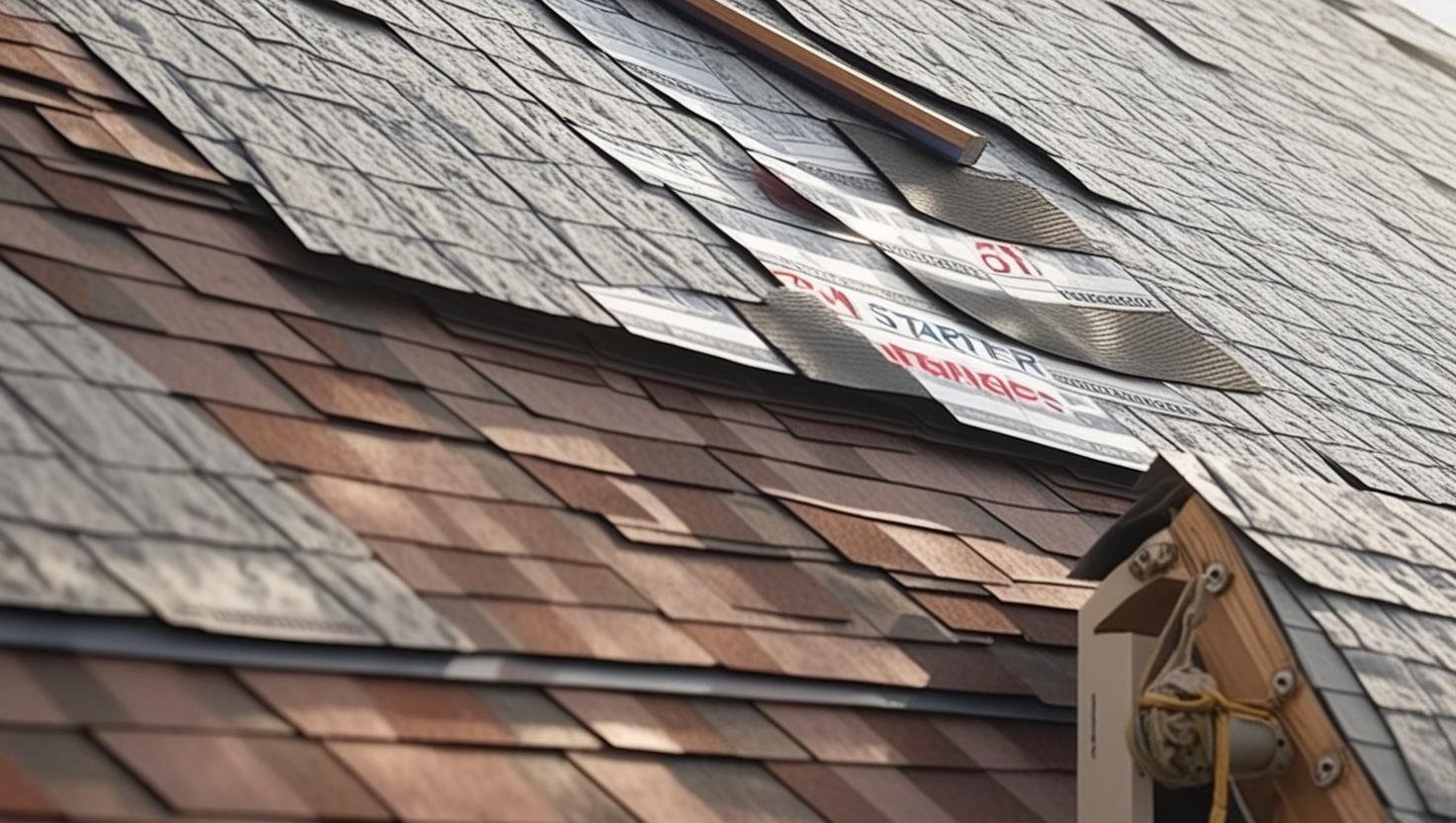Essential Materials for Asphalt Roof Replacement: A Complete Guide
Table of Contents
ToggleReplacing your roof is a big decision, and if you’re considering asphalt shingles, you’re in good company. Asphalt roofs are the most popular choice for homeowners due to their affordability, durability, and versatility. But a successful roof replacement involves more than just slapping on new shingles. It’s a multi-layered process that requires several key materials, each playing a vital role in protecting your home. Let’s walk through everything you need to know about the materials involved in an asphalt roof replacement.
1. Roof Decking: The Foundation
The roof decking, also called sheathing, is the base layer of your roof. Typically made of OSB (oriented strand board) or plywood, it provides a solid surface for the rest of the roofing materials. Over time, especially on older roofs, decking can become soft or even rotten. During a replacement, any damaged decking must be replaced to ensure a sturdy foundation.
Why it matters: Think of the decking as the backbone of your roof. If it’s compromised, the entire structure is at risk. Damaged decking can lead to leaks, sagging, and even structural issues.

2. Underlayment: The Moisture Barrier
Once the decking is in place, the underlayment is installed. This layer acts as a moisture barrier, protecting the decking from water infiltration during heavy rain or snow. It’s like a raincoat for your roof, keeping everything underneath dry.
Types of Underlayment:
- Synthetic Underlayment: lightweight, durable, and resistant to tearing. It’s the go-to choice for most modern roofs.
- Organic Felt: A more traditional option, often used in new construction. It’s less expensive but not as robust as synthetic materials.
Why it matters: The underlayment is your roof’s first line of defense against water. Without it, even the smallest leak can cause significant damage.
3. Ice and Water Shield: Extra Protection
In areas prone to leaks—like valleys, roof edges, and around chimneys or skylights—an ice and water shield is installed. This self-adhesive, rubberized membrane provides an extra layer of waterproofing, especially in regions with harsh winters.
Why it matters: This shield is like an insurance policy for your roof. It prevents water from seeping into vulnerable areas, reducing the risk of leaks and ice dams. Plus, some insurance companies offer discounts for homes with this added protection.
4. Drip Edge Flashing: Keeping Water Where It Belongs
Drip edge flashing is a metal strip installed along the edges of your roof (the eaves and rakes). It directs water away from the fascia and into the gutters, preventing water damage to your home’s structure.
Material Options:
- Aluminum
- Galvanized steel
- Copper (for a premium, long-lasting finish)
Why it matters: Without drip edge flashing, water can seep under your shingles and cause rot or mold. It’s a small detail that makes a big difference.
5. Flashing: Sealing the Gaps
Flashing is used to seal joints and transitions in your roof, such as around chimneys, skylights, and walls. Typically made of metal, it’s installed to prevent water from seeping into these vulnerable areas.
Types of Flashing:
- Pipe Vent Flashing: Seals around plumbing vents.
- Roof-to-Wall Flashing: Used where the roof meets a vertical wall.
- Chimney Flashing: Protects the area around chimneys.
Why it matters: Flashing is like the caulk of your roof—it fills the gaps where water could sneak in. Properly installed flashing is essential for a leak-free roof.

6. Shingles: The Outer Armor
Shingles are the most visible part of your roof and provide the primary protection against rain, wind, and UV rays. Asphalt shingles are the most popular choice due to their affordability, durability, and ease of installation.
Types of Shingles:
- 3-Tab Shingles: Affordable and lightweight, with a flat, uniform appearance.
- Architectural Shingles: Thicker and more durable, with a textured, dimensional look.
- Starter Shingles: Installed along the roof’s edges to provide a secure base for the main shingles.
- Ridge Cap Shingles: Used along the roof’s peak for added protection and a polished finish.
Why it matters: Shingles are your roof’s first line of defense against the elements. Choosing high-quality shingles ensures your roof can withstand whatever Mother Nature throws its way.
7. Ventilation: Keeping Your Roof Healthy
Proper ventilation is crucial for maintaining the health of your roof and home. It regulates temperature and moisture levels in the attic, preventing issues like mold growth and premature roof deterioration.
Types of Vents:
- Ridge Vents: Installed along the roof’s peak to allow hot air to escape.
- Soffit Vents: Located under the eaves to draw in cool air.
- Gable Vents: Installed on the sides of the home to promote airflow.
- Power Vents: Mechanically powered to enhance ventilation.
Why it matters: Without proper ventilation, heat and moisture can build up in your attic, leading to higher energy costs and a shorter roof lifespan. Think of it as your roof’s way of breathing.
8. Gutters and Downspouts: Directing Water Away
Gutters and downspouts are essential for directing water away from your home’s foundation. They prevent water from pooling around the base of your home, which can lead to structural damage.
Why it matters: A well-functioning gutter system protects your home’s exterior and foundation from water damage. It’s like a drainage system for your roof.
9. Additional Components
- Pipe Boots: Seal around plumbing vents to prevent leaks.
- Roof Valleys: Channels where two roof slopes meet, often lined with metal flashing for added protection.
- Soffit and Fascia: Soffits provide ventilation, while fascia boards support the gutters and give the roof a finished appearance.
Key Considerations for Asphalt Roof Replacement
- Material Choices: Consider your climate, budget, and aesthetic preferences when selecting roofing materials.
- Labor Costs: Roof replacement is labor-intensive, so factor in installation costs when budgeting.
- Warranties: Look for both manufacturer warranties (for materials) and workmanship warranties (from the contractor).
- Timing: Spring and fall are ideal seasons for roof replacement due to milder weather conditions.

Final Thoughts
An asphalt roof replacement is more than just swapping out shingles. It’s a complex process that involves multiple layers and components, each playing a vital role in protecting your home. By understanding these materials and their functions, you can make informed decisions and ensure your new roof provides lasting protection.
If you’re ready to start your roof replacement project, consult with a reputable roofing contractor to discuss your options and get a detailed estimate. With the right materials and professional installation, your new roof will enhance your home’s value and provide peace of mind for years to come.
Materials for asphalt roof replacement (multiple instances): (FAQs)
1. How long does an asphalt roof last?
An asphalt roof typically lasts 15–30 years, depending on the type of shingles and your local climate. Architectural shingles tend to last longer (25–30 years) compared to 3-tab shingles (15–20 years).
2. Can I install new shingles over old ones?
While it’s possible to install new shingles over old ones, it’s not recommended. Adding a second layer can hide underlying damage, add unnecessary weight to your roof, and reduce its lifespan. A full tear-off and replacement is the best way to ensure a durable, long-lasting roof.
3. What’s the difference between 3-tab and architectural shingles?
- 3-Tab Shingles: Flat, lightweight, and affordable. They have a uniform appearance but are less durable.
- Architectural Shingles: Thicker, heavier, and more durable. They have a textured, dimensional look and offer better wind and impact resistance.
4. Do I need ice and water shield if I live in a warm climate?
While ice and water shield is most critical in cold climates to prevent ice dams, it’s still a good idea to install it in warm climates. It provides an extra layer of protection in vulnerable areas like valleys and around chimneys, reducing the risk of leaks during heavy rains.
5. How much does an asphalt roof replacement cost?
The cost of an asphalt roof replacement varies depending on the size of your roof, the materials used, and your location. On average, homeowners spend
5,000–
5,000–12,000 for a full replacement. High-quality materials like architectural shingles and synthetic underlayment may increase the cost but offer better long-term value.



